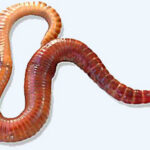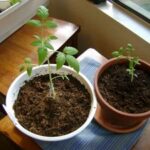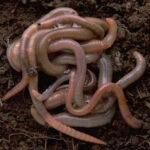My crazy friend brought home about 300 new family pets the other day. Okay, they aren’t really pets, but they are little creatures who are going to live with the family and make their lives better. They’re worms! My friend decided to start back up her composting bin and she needed a new batch of worms to get it going. I thought that sounded pretty interesting, so I asked her how it was done.
Prepare your container
Making a worm compost bin for your family is so easy, even kids can do it. All you really need is a plastic tub with a lid to get started. For best performance, it is recommended that you drill about a dozen ¼ inch holes in the bottom of the tub. The holes allow for aeration and drainage. You can set the tub on blocks over a tray or lid to catch any drainage.
Some people don’t even bother with the holes if their bin will be kept indoors. They simply leave the top open and monitor the moisture level carefully.
Easy ways kids can help
Once you have prepared your bin, you will need some bedding for your worms. My friend recommended shredded paper, but not the kind with a glossy coating. Shredded cardboard works nicely, too. Fill the bin about 2/3 full of bedding.
The paper must be moistened to make it easier to digest, but make sure not to fully saturate it. Your worms don’t want a sloppy mess, just a dampened bed. Your kids can have fun sprinkling water on the paper and sifting it around to get it nicely moistened for the worms. Tell them to fluff it up a bit to make sure the worms have room to move around.
After that, they can add a few handfuls of dirt to help the worms digest their food. They use the tiny grit in dirt to grind their food, so this is an important step.
Add the right worms
The right worms for composting are called Eisenia Foetida or red wigglers. You can buy these online or at many pet or farm stores. These little worms are very effective at their job, which is to eat, eat, eat. They eat about half their weight in food every day, so if you have two pounds of worms, you can feed them a pound of food each day.
Feed them the right stuff
You can feed your worms a variety of food waste from the kitchen. Unused vegetable parts, fruit rinds, old breads, coffee grounds and even pulverized egg shells are great. Stay away from meats, dairy and pet poop, as these are not good for your worms.
Read up on what sorts of foods your composting worms will like best. Also, try to bury the food scraps in different places around the bin. If you are feeding your worms the right amount, your bin should not be stinky. You don’t have to feed them every day, but check the moisture when you do.
Benefits of worm composting
I asked my friend why we should consider worm composting. She said, “Composting keeps food waste out of landfills and gifts us with free, organic fertilizer.” That fertilizer comes in the form of castings, or worm poop. Your kids will probably like harvesting the castings and changing the bedding in the worm composting bin, as it gives them a chance to sort of play with their critters before they have to go back to work.
More by Tavia:
Helping Children Overcome Nature Deficit Disorder
Photography Helps Kids Show You Their World
Outdoor alternatives to boring playgrounds





